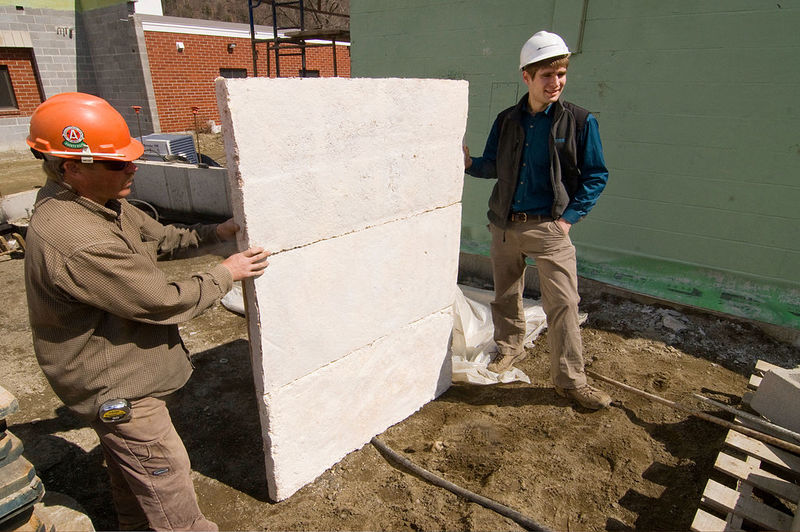If your insulation suddenly smells musty, then it’s most likely water damaged. Now that you’ve covered “what does water damaged insulation smell like,” what should you do next? Read on to find out.

Is insulation ruined if it gets wet?
Whether your insulation gets wet from the rain or a sudden pipe burst, it becomes prone to water damage. When water and moisture come into contact with your insulation, it becomes troublesome.
If your insulation is in a closed wall, it might not dry out fast enough. Mold might grow on it, and it also deteriorates so you’ll have no choice but to replace it.
Additionally, your insulation won’t be as effective if it’s wet. That’s why you be on the lookout for signs of water damaged insulation early on.
An easy and quick way to tell is through your insulation’s smell. Keep reading to find out more!
What’s The Smell Of Water Damaged Insulation?
For starters, a musty smell in your insulation is a big red flag. Think of a room that’s unopened for a long time. If it smells like this, then your insulation might be wet.
Pungent odors are also a telltale sign of water damaged insulation. To describe the smell, think of rotting wood or dirty socks. Most of the time, musty smells go undetected in the early stages.
Why does water damaged insulation smell like this? Water damaged insulation, when left untreated, will likely grow molds. That’s what makes the musty and pungent smell.
Molds have a distinct odor, so if you notice this smell, inspect your insulation immediately.
How do you remove the smell of wet insulation?
Now that you’ve identified the reason behind your wet insulation’s smell, what do you do? The best thing to do is to treat your damp insulation. Here’s how.
Depending on the type of insulation, you’ll need to approach the problem differently. Wet spray foam insulation, cellulose insulation, and fiberglass insulation are all treated differently.
Since spray foam insulation is relatively resistant to water and moisture, all you’ll have to do is to dry it out. You can opt to use a piece of cloth or a mop to soak up any water or moisture on the surface. Afterward, place a fan near the insulation to speed up the drying process.
Cellulose insulation is a bit trickier to handle. Since it’s plant-based primarily, cellulose insulation absorbs water quickly. You might need to replace the insulation entirely.
Another popular type of insulation is fiberglass. Since it’s glass, this type of insulation usually doesn’t absorb water. What you can do is soak up all the water and moisture on the surface, then dry it out with a dehumidifier.
However, it’s a different story if the water damage remains untreated for a long time. Mold will likely grow on the insulation. Your insulation might also rot after some time.
In cases like this, you’ll need to remove and replace your water damaged insulation. It might be a health and safety hazard if left unattended.
Usually, homeowner’s insurance covers water damaged insulation repairs if the damage happens suddenly. Insurance coverage usually includes a flash flood or a burst pipe, for example.
What are the other signs of water damaged insulation?
Other than the musty smell, how can you tell if your insulation is water damaged?
As a general rule, always check your insulation after heavy rains and floods. You should also inspect your insulation if there’s a hole where water can enter or a leaking pipe above it.
It’s also a telltale sign if your insulation looks and feels wet. The insulation can clump together. Sometimes, dirt even gets trapped in the insulation.
Another way to test for water damage is by using an infrared thermometer. This way, you won’t have to remove the panels above the insulation.
Suppose the temperature of a specific insulated area is significantly different from other areas. Usually, wet insulation performs poorly. It means that the water damage affected your insulation’s ability to regulate temperatures.
It’s best to replace your insulation if it is significantly water damaged. If there are molds or there are rotting areas on the insulation, you should get them replaced.
How do I keep my insulation dry?
If you want to avoid the costs of insulation replacement, or you want to maintain your new insulation, then read on for some helpful tips.
The best thing to do to keep your insulation dry is to inspect it regularly. Look out for leaks, drips, and any source of water that can come into contact with your insulation. Make sure to get these problem areas fixed so that they won’t wet your insulation.
Another helpful tip is to waterproof the areas where you put the insulation. You can use water-resistant seals and paints to cover the panels above the insulation.
Conclusion
Water damage on insulation is pretty troublesome. You need to identify the signs early on, and it all starts with a simple question — “what does water damaged insulation smell like?”
